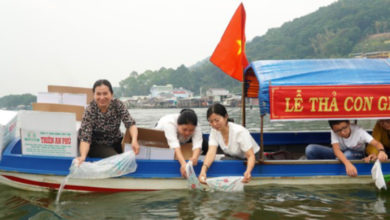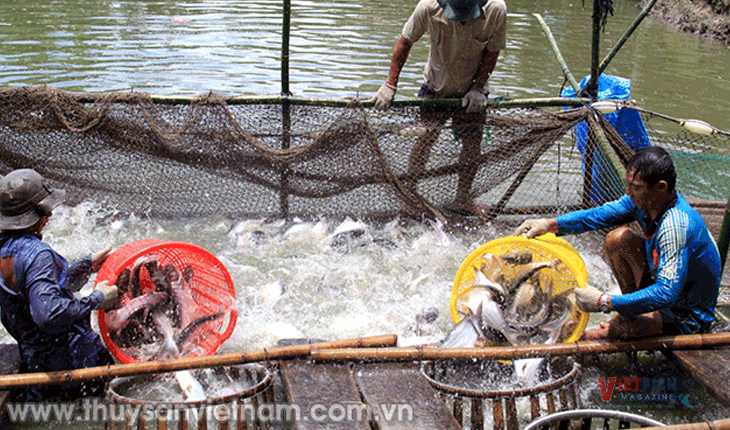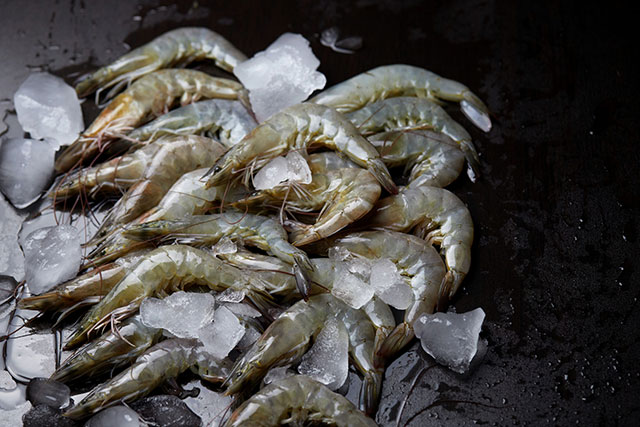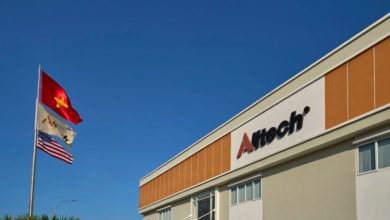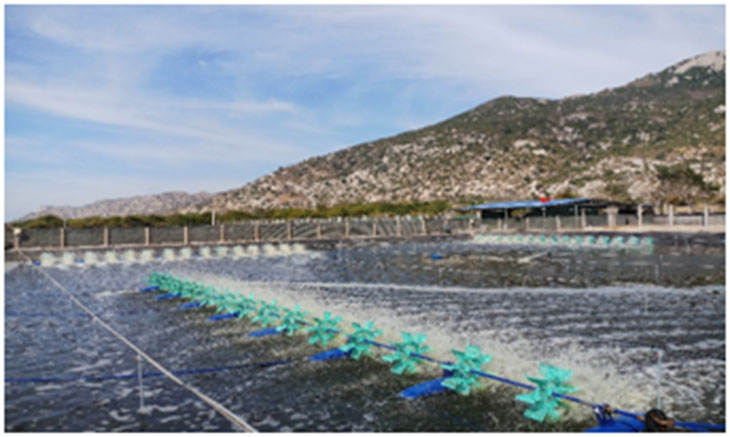Zeigler Vietnam meets with Customers on Management of Transparent Postlarvae Disease
Zeigler Vietnam recently met with customers on management strategies for prevention and control of Transparent Postlarvae Disease (TPD) in Phan Rang, Vietnam.
Peter Van Wyk, Research and Development Technical Manager at Zeigler Bros. Inc. USA presented recent updates about TPD and shared health management practices he gained over nearly 40 years of experience. Vietnam Technical Sales Manager, Cao Khanh Ly, provided translation of the meeting for non-English speaking attendees. The event was attended by 16 large hatchery customers in Central Vietnam. Zeigler meetings are organized in major shrimp producing regions globally to support local customers with technical solutions.
TPD was first detected in hatcheries in Ecuador (2015) where it caused mass mortalities, followed by outbreaks in China (2020) and, more recently, in Vietnam (2023). In larval tanks affected by TPD larval development appears normal until larvae reach the early postlarval stages. The first symptoms typically appear between PL2 – PL4 when diseased shrimp develop the characteristic symptoms of an empty gut and a colorless, translucent hepatopancreas. Mortalities will generally begin a few hours later. Mortality rates reach 80-100% within 24 – 48 hours.
Evidence has been presented for three different possible causes: 1) infection by a new strain(s) of Vibrio parahaemolyticus (Zou et al., ShrimpVet); 2) co-infection by a new, non-luminescent strain of V. harveyi + non-AHPND V. parahaemolyticus (Hoang); or 3) infection by a novel RNA Virus from family Marmidae, called Baishivirus (Xu et al.). Zeigler believes that majority of the TPD outbreaks in Asia have been caused by one or more Vp strains that are distinct from the Vp strain causing AHPND. Toxins produced by these Vibrio strains are distinct from the PirA and PirB toxins associated with AHPND. Non-luminescent V. harveyi is often, but not always, seen in tanks with TPD. Baishivirus likely causes very similar symptoms, but the fact that Vp isolated from shrimp with TPD is capable of infecting healthy shrimp suggests that the RNA virus is not the pathogen causing massive mortalities of PLs in Vietnam. More information is needed to definitively identify the causative agent and mode of transmission.
Zeigler believes that while the etiology of this disease is being researched, it is essential for hatcheries to implement management practices focused on overall disease prevention, and especially on lowering risks associated with pathogenic vibrios. Van Wyk strongly recommended that shrimp hatcheries adopt the HACCP (Hazard Analysis Critical Control Points) approach to minimizing their disease risk. HACCP is a preventative system of process controls designed to identify and minimize risks associated with significant hazards to the production process. When developing a hatchery HACCP plan, it is very helpful to create a process flow chart and identify at each step risk factors for the introduction of pathogens. Once the risk factors have been defined, critical control points can be identified, and monitoring procedures and corrective actions can be established.
For hatcheries that have experienced an outbreak of TPD, a complete facility disinfection and dryout is necessary. Because vibrios form biofilms that shield them from routine chlorination, biofilm removal is critical to the success of the disinfection step. Van Wyk provided three methods for biofilm removal:
- Mechanical removal;
- Chemical removal and;
- Electrochemical disinfection.
Mechanical removal is accomplished with pressure washers but is only useful for removing biofilms from exposed surfaces. Chemical removal of biofilms is accomplished treating tanks and plumbing with seawater treated with a mixture of 2.5% NaOH plus a surfactant for a minimum of 3 hours. After draining and rinsing, the system must undergo a 7-day dryout. A final disinfection step involves treating the tanks and plumbing with an acidified bleach solution. This was accomplished by adding sufficient amounts of a weak acid such as citric acid to a 50 ppm bleach solution to achieve a pH between 5 and 6. The goal is to maximize the percentage of hypochlorous acid (HOCl), which has 80X the disinfecting power of hypochlorite ion, and minimize the production of chlorine gas, which is extremely hazardous. Electrochemical disinfection is a new method for biofilm removal in which electrolysis of seawater produces HOCl and other disinfection products. Electrolysis of seawater is accomplished by passing a 12V current through specially designed plate electrodes suspended in seawater to achieve an ORP of 800-900 mV. This method is cheaper and safer than the chemical disinfection method.
Van Wyk also recommended that hatcheries invest in highly effective seawater filtration and disinfection technologies such as rapid sand filtration, ozone systems, ultrafiltration systems and UV sterilizers. However, sterile seawater can be rapidly colonized by Vibrio, so to minimize the opportunity for Vibrio to become established, Van Wyk recommended treating seawater with a high-quality probiotic, such as Zeigler Rescue, at a density of 100,000 cfu/mL as soon as possible after the last disinfection step.
For maturation systems, Van Wyk recommended PCR screening and freezing of all natural feeds, eliminating the use of live polychaetes, and replacing the riskiest natural feeds with formulated maturation feeds such as Zeigler’s Redi-Mate diet. In larval rearing systems Vibrio is most often introduced with the algae and Artemia nauplii fed to the larvae.
For algae production systems, the key critical points are the pure cultures and disinfection protocols for seawater and air supplies. Many hatcheries have been able to improve algae quality through the use of automated algae bioreactors. However, when hatcheries do encounter problems with Vibrio contamination of algae cultures, it is very helpful to have formulated diets capable of replacing a high percentage of the algae in the larval feeding protocol. One such diet is Zeigler’s EZ Larva diet, which has been demonstrated to be capable of replacing 50% of the algae requirement when the larvae are in the Zoea 1 stage, and 100% of the algae from Zoea 2 on.
Artemia nauplii are the most important vector for the introduction of pathogenic Vibrio into the larval rearing system. Decapsulation of Artemia cysts is helpful in reducing Vibrio levels, but nauplii from decapsulated cysts can still contain significant levels of pathogenic Vibrio. Zeigler offers a micro-encapsulated liquid feed product called EZ Artemia Ultra that is a biosecure alternative to Artemia nauplii. While EZ Artemia Ultra is capable of replacing up to 100% of the Artemia nauplii in the larval feeding protocol, 100% replacement of Artemia nauplii isn’t necessary to obtain significant benefits from the addition of EZ Artemia Ultra to the larval feeding protocol. This is because Zeigler’s Rescue probiotic encapsulated in the feed at a concentration of 1 billion cfu/g. Rescue contains 4 strains of Bacillus spp. that were selected for their ability to inhibit the growth of pathogenic strains of Vibrio. Van Wyk presented the results from a study that demonstrated the ability of Rescue both to colonize the gut of postlarvae and to support significant improvements in survival in challenge trials in which postlarvae were fed high levels of V. harveyi and V. parahaemolyticus. He also presented results from a recent study conducted at a commercial hatchery in Indonesia in which tanks fed with EZ Artemia Ultra as either a 33% replacement or 100% replacement of artemia nauplii from PL1 to PL6 had significantly higher survival rates than control tanks fed with Artemia nauplii following the normal protocol.
Van Wyk also addressed the problem faced by hatchery operators of how to balance feed quality with the need to reduce production costs when faced with shrinking margins between profits and production costs. Van Wyk pointed out that survival is the strongest driver of hatchery profitability, and that the best way for hatcheries to maximize profits is to invest in high quality feeds. An economic model based on typical commercial hatchery production parameters compared a low-cost feed scenario with a high-cost fee scenario. The model demonstrated that only a 2% improvement in survival was required to pay for a more expensive feed costing 40% more than the feed in the low-cost feed scenario. If survival improved by 5%, profits were 20% higher for the high-cost feed scenario compared to the low-cost feed scenario.
For a higher cost feed to improve profitability, it must be a higher quality feed. Van Wyk suggested that protein efficiency (grams of PLs produced per gram of protein fed) is a much better indicator of feed quality than feed protein level. To support this claim, Van Wyk presented data comparing the performance of Zeigler’s PL diet, Z Pro, to the performance of four top-selling competitor diets. Z Pro was formulated to maximize efficiency by providing precise levels of 70 nutrients in the amounts required by the postlarvae and by utilizing ingredients selected for high levels of digestibility. In this study shrimp fed with Z Pro grew significantly faster and had significantly higher survival rates. Protein efficiency averaged 80% higher than for the competitor diets, all of which had higher protein levels than Z Pro. In feeds with high protein efficiencies, nutrients are efficiently converted to postlarval biomass. Excess undigested nutrients are excreted into the water, resulting in high levels of ammonia. Ammonia is an excellent nitrogen source for Vibrio and therefore high ammonia levels lead to higher populations of Vibrio in the water column. Higher ammonia levels also are stressful for postlarvae. Stressed PLs do not grow as well and are less able to survive challenges with Vibrio. Van Wyk also presented data that showed that larvae fed with Z Pro in the hatchery not only had higher survivals and were larger when harvested, but also had much higher survival in nursery raceways fed with other feeds. The additional profits generated by the improvements in survival in both the hatchery and nursery system clearly demonstrated the importance of using high quality feeds, especially during times of low PL prices.
Zeigler is communicating regularly with customers and the top research institutions worldwide to stay abreast of the latest research on the etiology and management of the disease. In the meantime, Zeigler is committed to working closely with major hatcheries in Vietnam and other countries to adopt the best management strategies to maximize survivals and limit the incidence of TPD in hatcheries. By helping hatcheries to develop HAACP plans to improve biosecurity, and by providing probiotic and feed solutions that support higher survivals, Zeigler is doing everything we can to help the industry overcome this latest disease challenge.
VFM


